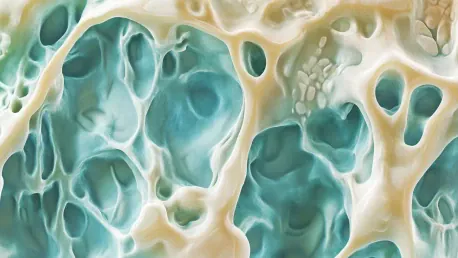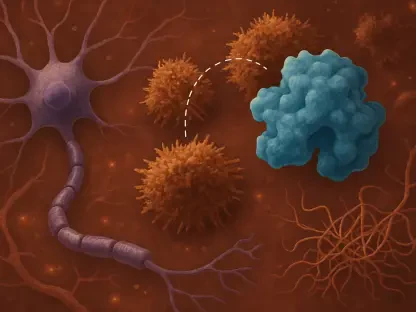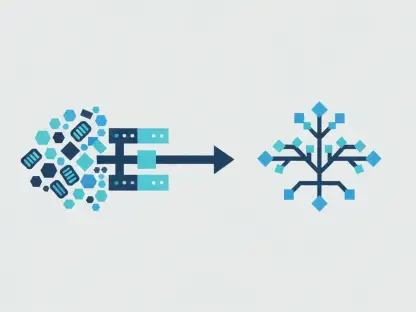Imagine a future where birth injuries, facial defects, and other cartilage-related conditions could be treated effectively and efficiently with a novel tissue that combines softness, elasticity, and stability. This future has moved significantly closer to reality with the discovery of a new skeletal tissue called “lipocartilage.” This revolutionary tissue has been meticulously studied by a global research team, including the renowned Dr. Richard Prince from East Tennessee State University. The comprehensive findings have been published in the prestigious journal, Science. Lipocartilage is unique due to its fat-filled cells known as lipochondrocytes, which provide a super-stable internal support similar to the cushioning effect of bubble wrap, making it an excellent candidate for various medical treatments.
Breakthrough Technique of Nonlinear Microscopy
Innovative Approach to Track Lipocartilage Formation
One of the significant catalysts behind this groundbreaking discovery was the application of nonlinear microscopy, a sophisticated technique that stands in stark contrast to traditional methods. Traditional cartilage research techniques often involve large dyes or molecules to track and study tissues, but nonlinear microscopy offers a more refined and less invasive alternative. By employing dye-free vibrational imaging, scientists were able to monitor glucose metabolism as it transformed into lipid droplets, thereby illuminating the formation process of lipocartilage with unprecedented clarity. This advanced technique allowed the researchers to observe how the internal fat stores within lipochondrocytes provided the necessary durability and elasticity, challenging long-held assumptions about cartilage biomechanics that primarily relied on external matrices for structural integrity.
Shattering Conventional Biomechanical Assumptions
The discovery of lipocartilage through nonlinear microscopy has prompted a reevaluation of traditional concepts in cartilage biomechanics. Historically, the biomechanical strength and resilience of cartilage were thought to be largely dependent on external matrices. However, the new findings suggest that lipocartilage’s durability and elasticity stem from the internal fat stores within lipochondrocytes. Interestingly, this stability remains consistent regardless of dietary intake, indicating a novel form of resilience not previously documented. The study’s use of nonlinear microscopy has thus not only revealed the unique properties of lipocartilage but also paved the way for more accurate and less invasive methods of studying similar tissues in the future. By understanding the internal structures that contribute to tissue resilience, researchers can develop better therapeutic strategies for conditions that affect cartilage.
Potential Applications and Future Research
New Research Opportunities in Lipid Biology
The breakthrough discovery of lipocartilage opens up a plethora of new research opportunities, particularly in the field of lipid biology. Led by Raul Ramos at the Plikus laboratory at the University of California, Irvine, the research team has highlighted the unique lipid biology of lipocartilage as a promising new area of study. Future research endeavors are set to focus on several critical aspects, including the long-term stability of lipochondrocytes, the molecular programs that guide their formation and functionality, and the insights these cells provide into the mechanisms of cellular aging. Understanding these factors could significantly enhance our ability to engineer tissues and develop innovative medical applications, ultimately leading to improved outcomes for patients with various cartilage-related conditions.
The Role of East Tennessee State University
East Tennessee State University (ETSU) has played a pivotal role in this groundbreaking research, with Dr. Richard Prince being one of the many dedicated faculty members contributing to the study. ETSU has a strong reputation for pioneering research in diverse fields, from novel discoveries like lipocartilage to ecological studies on bee decline. The university’s commitment to advancing scientific knowledge is evident in its impressive track record; in the fiscal year 2024 alone, ETSU secured $71 million in sponsored projects and $21.3 million in federal awards. This substantial funding underscores the university’s dedication to cutting-edge scholarship and its significant impact on the scientific community.
Conclusion
East Tennessee State University (ETSU) has significantly contributed to groundbreaking research, thanks in part to dedicated faculty members like Dr. Richard Prince. Renowned for its pioneering efforts in diverse fields, ETSU has made notable advancements ranging from novel discoveries such as lipocartilage to critical ecological studies on the decline of bee populations. The university’s relentless pursuit of scientific knowledge is highlighted by its impressive achievements in securing funding. In the fiscal year 2024 alone, ETSU attracted $71 million in sponsored projects and an additional $21.3 million in federal awards. This substantial financial support underscores the institution’s commitment to cutting-edge research and its substantial influence in the scientific community. ETSU’s robust investment in innovative studies solidifies its status as a leading research university, fostering a culture of academic excellence and groundbreaking discoveries that make significant contributions to both science and society at large.









